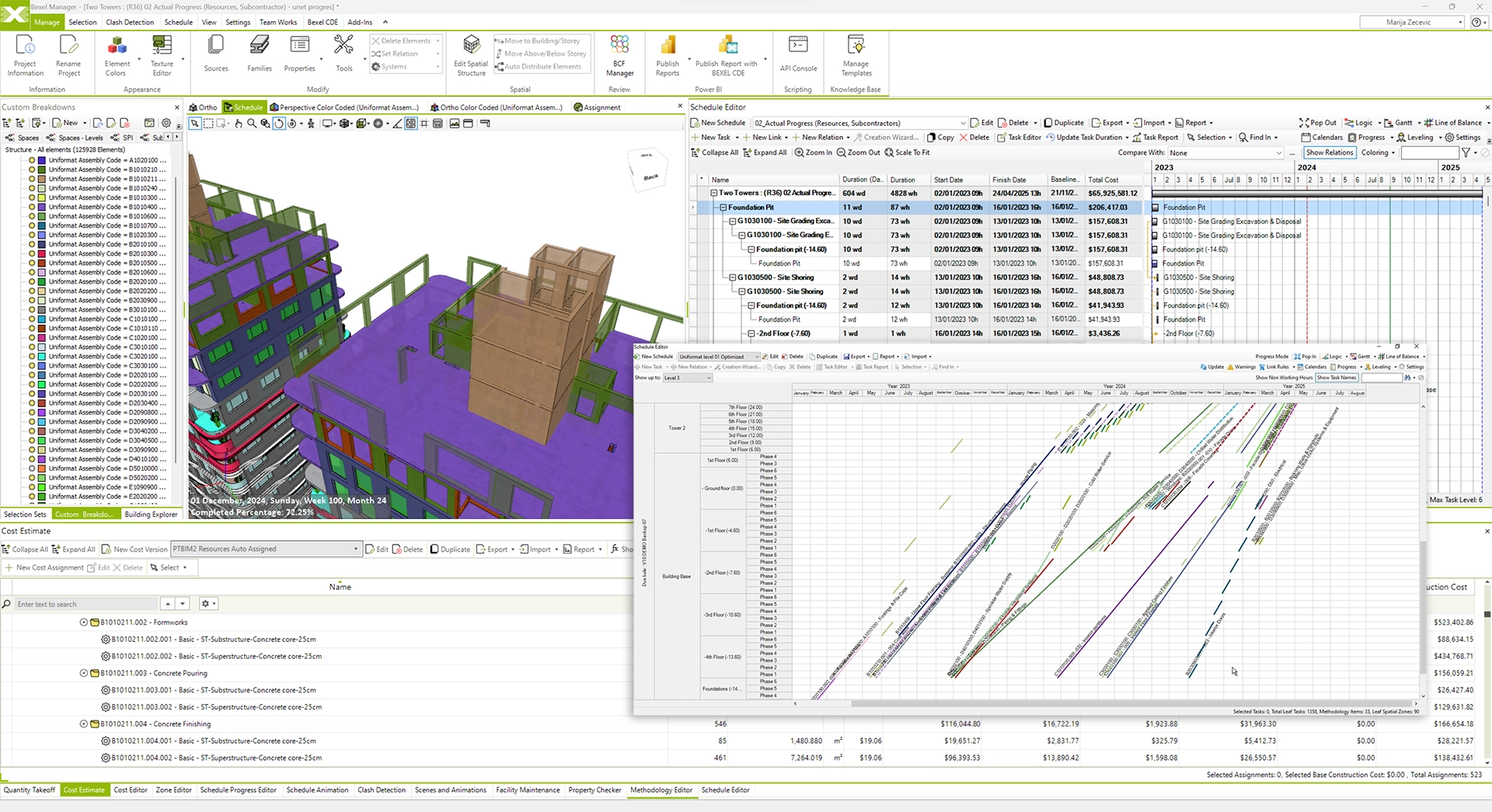In the dynamic world of construction project management, staying ahead means embracing innovative technologies that streamline processes and boost efficiency. A well-thought-out schedule ensures that projects are completed on time, within budget, and with minimal disruptions.
Lean Construction management
Lean construction management is a project management approach rooted in the principles of lean thinking, aiming to maximize efficiency and minimize waste throughout the construction process. Emphasizing collaboration, continuous improvement, and the elimination of non-value-adding activities, lean construction focuses on delivering value to the client while optimizing resources.
Location-based scheduling
Location-based scheduling (LBS) stands out as a strategic construction management approach, transforming how projects are planned and executed. By prioritizing the physical layout of the construction site, LBS offers a spatially informed perspective, aligning seamlessly with the principles of lean construction. This method diverges from traditional scheduling by organizing activities based on their specific locations, leading to optimized resource allocation, reduced material handling, and enhanced workflow coordination.
Flowline Charts: Visualizing Construction Sequences
The flowline chart provides a powerful tool for analyzing and optimizing construction schedules. This visual representation of activity sequences allows project managers to identify bottlenecks, optimize resource allocation, and streamline workflows. Flowline charts are aligned seamlessly with the lean principle of streamlining processes.

Integrated 4D/5D BIM
The integrated BIM environment seamlessly brings together the project’s BIM model geometry and information in three key dimensions—3D (BIM model geometry and information), 4D (time), and 5D (cost and resources data domains) —within a unified space.
The dynamic capabilities of BIM allow for real-time updates, ensuring that schedules are more accurate, transparent, adaptable and remain synchronized with the evolving project scope. By combining lean construction methodologies and BIM, construction projects can achieve heightened efficiency, reduced waste, and ultimately, successful, on-time delivery.
This integrated approach enables a dynamic and visual understanding of how construction sequences unfold over time and across different areas of the site. It optimizes resource allocation, reduces inefficiencies associated with material handling, and enhances overall project coordination. By aligning the schedule with the physical layout of the construction site, project managers can strategically plan and execute activities to minimize disruptions, streamline workflows, and improve project efficiency.
4D/5D Construction Simulation
Construction simulation allows project managers to visualize the entire construction process in a dynamic, virtual environment. By integrating time and cost elements, it offers a comprehensive understanding of how the project will unfold over time and the associated financial implications. This simulation capability not only aids in identifying potential clashes and delays but also enhances decision-making by providing a realistic preview of the project’s progress.
Improving the construction schedule creation process requires a holistic approach combining digitalization and automation, underpinned with integrated 3D/4D/5D BIM. The benefits of BIM, coupled with the visual insights provided by flowline charts and the efficiency brought by smart scheduling systems, create a comprehensive approach to project management. Remember, a well-crafted schedule is not just a plan—it’s a dynamic tool that adapts to the challenges of construction projects, ultimately leading to successful and timely project completion.




